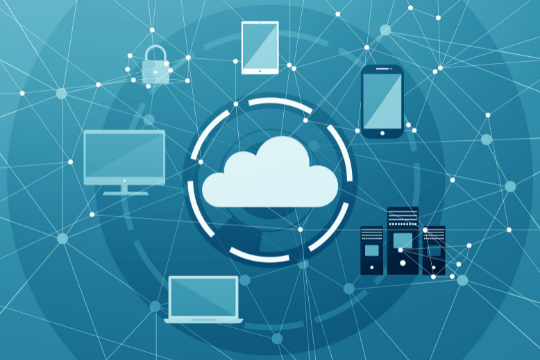 The security of commercial software, especially open source and third party software, has been an issue since the beginning of large‐scale computing. Even with the best intentions it is possible for a developer to introduce vulnerabilities in their code which can be exploited by attackers. This problem has become more prevalent as business processes focus on integrating application components provided by many different suppliers. The need for finding, managing, controlling and securing these components have become significant challenges in today’s software development life cycle.
The security of commercial software, especially open source and third party software, has been an issue since the beginning of large‐scale computing. Even with the best intentions it is possible for a developer to introduce vulnerabilities in their code which can be exploited by attackers. This problem has become more prevalent as business processes focus on integrating application components provided by many different suppliers. The need for finding, managing, controlling and securing these components have become significant challenges in today’s software development life cycle.
Importance of Supply Chain Security
As a software developer or a consumer, you have experienced the impact of supply chain security issues. You may have received an email from one of your contacts containing a link to what appeared to be a website with interesting content. In fact, it was nothing more than a distraction from the content that was really important – an attempt by an attacker to distribute malware that would have compromised your computer. This is just one example of the impact of an attack on the software supply chain.
The misuse of open source components by attackers is nothing new, but it has increased in sophistication over the past few years. Attackers have figured out how to target specific vulnerabilities in commercial software and exploit them to distribute malware. With an attack surface that includes numerous commercial and open source components, there is a significant challenge for developers in understanding the impact of new vulnerabilities on their software supply chain.
The risk of security breaches at any level has been shown to be potentially devastating, with an average of $4.24 million per incident recorded in 2021, according to a report from IBM and the Ponemon Institute.
The typical software supply chain includes an application developer, a software development tool vendor and multiple software component providers. In this situation, the application developer is responsible for ensuring that all components are secure and trusted before linking them together into an executable file. If the process of establishing trust is not performed correctly or if any component within the supply chain is compromised, then, as mentioned, the price can be too high to bear.
Ways Supply Chain Security Threats Affect Efficiency
The security of your software supply chain affects the performance of your organization’s IT systems. It is important that you can trust all components within your software supply chain, including open source and third party software, before integrating them into your product. This requires more than just knowing that the right licenses are in place. You must also have a secure process for establishing trust in your software supply chain. Your customers, partners and employees depend on the security of your IT systems to protect their data and meet their business needs. In fact, you may even be required by law to perform these activities.
You also need to understand that when a vulnerability is discovered in any one of the components within your software supply chain you will need to remove or replace that component before updating or patching it. This can also result in downtime which could impact the availability of your services – another financial hit for your organization.
Supply Chain Security Best Practices
The best supply chain security solutions to protect your business against threats is to build a secure software development lifecycle (SDLC) that includes security considerations from the start. This strategy reduces the total cost of ownership by helping you integrate effective software protection practices into your organization’s operations and culture, while minimizing your exposure to vulnerabilities in open source and third-party components.
A Secure SDLC Plan
A highly secure SDLC is a critical part of establishing trust in your software supply chain. Your plan should include the following:
– A process for identifying and managing open source and third party components throughout the life cycle, including a process for validating that discounts you apply to those components are legitimate
– Tools that enable visibility into security-related information about your components (e.g., open source uses, vulnerability data, known malicious code)
– A process for reducing the attack surface of an application via software composition analysis and enforcement of least privilege principles through the use of technologies like containers
– Tools that help you assess security vulnerabilities in your components on demand
– Technology to protect the confidentiality of your software supply chain, for example by scanning binary code to locate confidential data
– A plan for maintaining compliance with license agreements throughout the software supply chain
The Importance Of Compliance
Many customers are requiring application developers to build secure SDLCs that incorporate security best practices. Gaining deep visibility into your organization’s third party components is important if you want to secure your software supply chain because it enables you to assess the trustworthiness of individual components and build more effective protections into your applications.
While compliance with open source licenses is not currently required in most countries, many organizations are already using this strategy to protect themselves against future changes in open source distribution laws. Further, as open source usage continues to increase, your organization should expect that compliance will be required.
Security software types include encryption, malware detection and sandboxing protection. How an application developer chooses to secure their software supply chain will depend on the threats your organization faces.
By adding security to your SDLC, you can strengthen your ability to protect against threats like supply chain attacks, counterfeiting operations and unauthorized tampering with open source or third party components. This is an important step toward building trust in your software supply chain.
As an IT leader, you need to understand how your organization can secure its software supply chain and build security into every product that is developed. You also need to ensure compliance with open source distribution laws and best practices. Using a methodology like the one above will enable you to develop stronger security measures in your products and protect your customers.
Sunvera Software develops next-level software applications from start-to-finish. We are a premier software and mobile app development agency specializing in healthcare mobile app development, custom mobile app development, telehealth software, sales dashboards, custom mobile app development services, retail software development, supply-chain software, ecommerce, shopify, web design, iBeacon apps, security solutions and unified access software.
We are proud partners with Amazon AWS, Microsoft Azure and Google Cloud.
Schedule a free 30-minute call with us to discuss your business, or you can give us a call at (949) 284-6300.
 One of today’s worst phobias is getting hacked. That’s because not only are we at risk, but the companies and institutions that have our most vital data as well, from banks to big government—we’re vulnerable no matter what we do. All the protection in the world might not prevent our information from getting stolen out of businesses and corporations whose security systems have been compromised and whose data have been breached.
One of today’s worst phobias is getting hacked. That’s because not only are we at risk, but the companies and institutions that have our most vital data as well, from banks to big government—we’re vulnerable no matter what we do. All the protection in the world might not prevent our information from getting stolen out of businesses and corporations whose security systems have been compromised and whose data have been breached. The technology world is ever-changing with new concepts and advancements being made every day. Businesses that place an emphasis on their tech stack are more likely to succeed in this new age of technology. This is due to the fact that they can adapt more quickly instead of waiting around for someone else to solve problems or make improvements.
The technology world is ever-changing with new concepts and advancements being made every day. Businesses that place an emphasis on their tech stack are more likely to succeed in this new age of technology. This is due to the fact that they can adapt more quickly instead of waiting around for someone else to solve problems or make improvements. Artificial intelligence (AI) and machine learning applications are no longer a part of the future. They’re here now and they’re already revolutionizing businesses all over the world, helping to increase effectiveness and efficiency. The role of AI in business is therefore fundamental to the ongoing success of a large number of enterprises.
Artificial intelligence (AI) and machine learning applications are no longer a part of the future. They’re here now and they’re already revolutionizing businesses all over the world, helping to increase effectiveness and efficiency. The role of AI in business is therefore fundamental to the ongoing success of a large number of enterprises. The cloud computing vs distributed computing debate has been ongoing, and although there are similarities between the two, there are also important differences, with each one offering vital benefits to businesses and companies.
The cloud computing vs distributed computing debate has been ongoing, and although there are similarities between the two, there are also important differences, with each one offering vital benefits to businesses and companies. Computer security has evolved over the last few decades. As computers have become more prevalent, virus and malware creators have created new forms of viruses that plague systems worldwide. Antivirus software was developed to combat these issues, but it is no longer capable of protecting users’ machines, which has led to security professionals developing their own custom security software to combat malware and virus invasions.
Computer security has evolved over the last few decades. As computers have become more prevalent, virus and malware creators have created new forms of viruses that plague systems worldwide. Antivirus software was developed to combat these issues, but it is no longer capable of protecting users’ machines, which has led to security professionals developing their own custom security software to combat malware and virus invasions. Custom security solutions are a must-have for small and mid-sized businesses. Thieves are more sophisticated than ever before, and even a timely security solution won’t be able to stop them every time. With an approach customized for your business’ needs, you can feel more confident that you’re protected against current threats proliferating the internet today.
Custom security solutions are a must-have for small and mid-sized businesses. Thieves are more sophisticated than ever before, and even a timely security solution won’t be able to stop them every time. With an approach customized for your business’ needs, you can feel more confident that you’re protected against current threats proliferating the internet today. The mobile sector is booming with a large number of apps being created every day. As a result, there has been a race to make the best mobile apps accessible to all users across different devices. Implementing AI for mobile app accessibility has become a huge part of the process. These tools can be used by app developers and website developers alike to make sure that people with physical impairments can still enjoy the benefits of today’s state-of-the-art applications.
The mobile sector is booming with a large number of apps being created every day. As a result, there has been a race to make the best mobile apps accessible to all users across different devices. Implementing AI for mobile app accessibility has become a huge part of the process. These tools can be used by app developers and website developers alike to make sure that people with physical impairments can still enjoy the benefits of today’s state-of-the-art applications. Speech Recognition was once regarded as a gimmick and has come a long way since the days of Star Trek’s “computer”. More than ever, AI and new speech recognition technologies allow an app developer to add rich, powerful voice-activation capabilities to apps.
Speech Recognition was once regarded as a gimmick and has come a long way since the days of Star Trek’s “computer”. More than ever, AI and new speech recognition technologies allow an app developer to add rich, powerful voice-activation capabilities to apps. Data security is of key importance in today’s business world due to the growing threats from hackers. Fortunately, there are a number of methods you can employ to protect your data, ranging from easy-to-implement strategies to the more robust and harder-to-implement kind.
Data security is of key importance in today’s business world due to the growing threats from hackers. Fortunately, there are a number of methods you can employ to protect your data, ranging from easy-to-implement strategies to the more robust and harder-to-implement kind.
